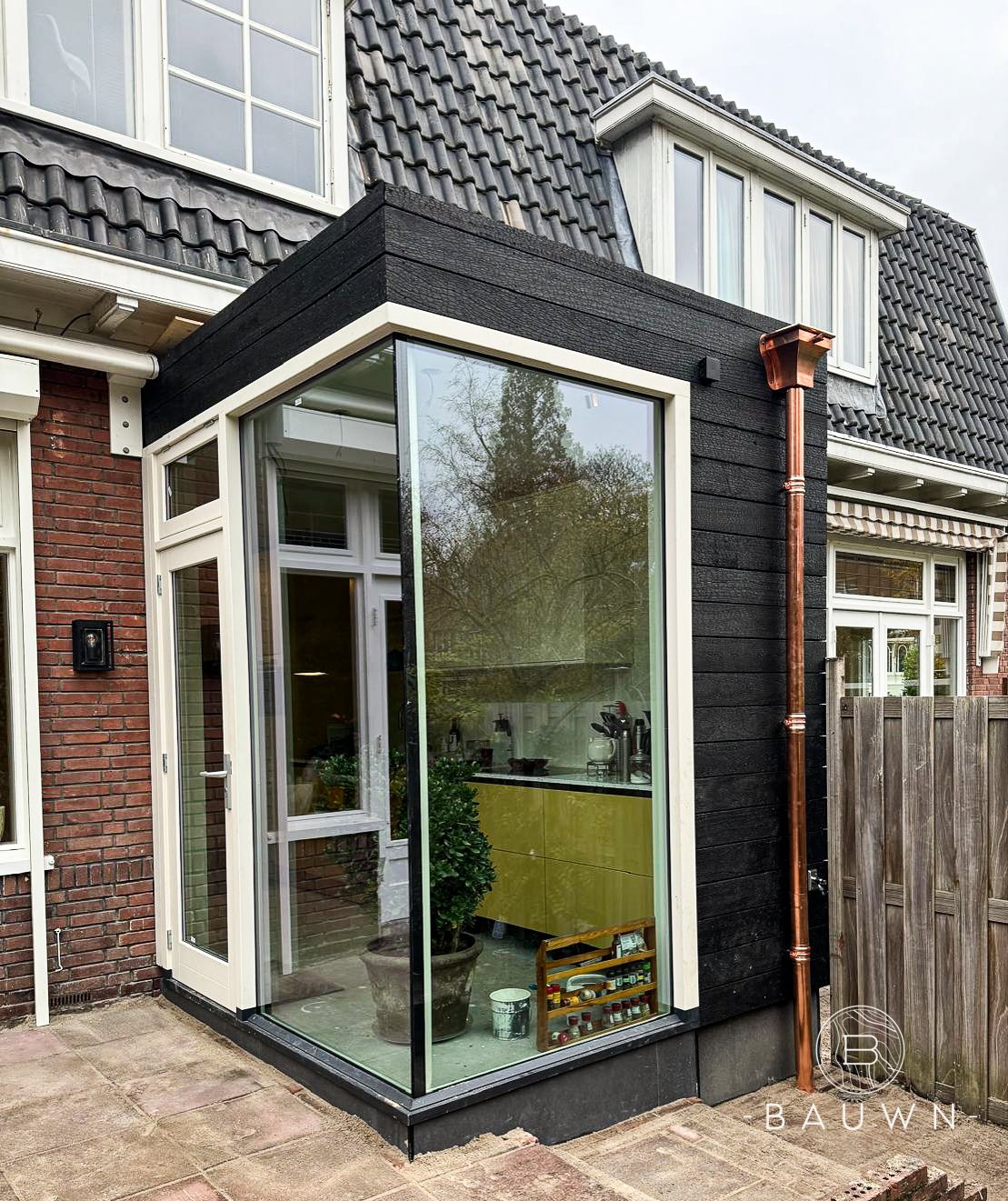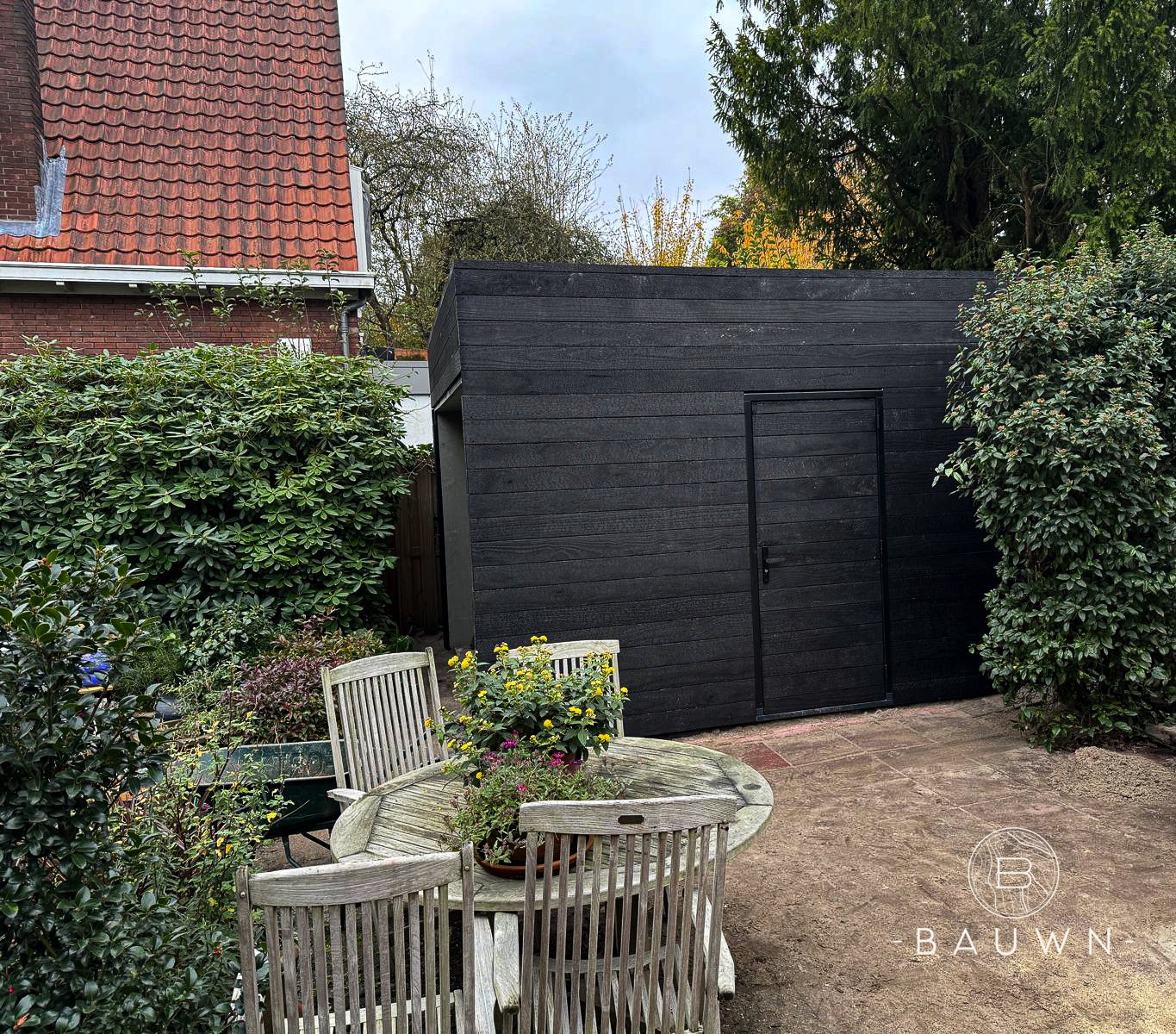Carbon
Accoya




A common question regarding Shou Sugi Ban façades is whether they need regular maintenance. Generally, the answer is no. In Japan, it’s customary to leave Yakisugi façades untreated after installation, as the natural weathering process is considered aesthetically pleasing. However, all wood, including Charred Wood, will weather over time. Carbon layer overtime will loose its protection due to weathering and eventually will turn grey due to UV exposure.
These changes are mainly cosmetic and depend on factors like location, climate, and surface exposure. To maintain the original look of your Yakisugi, applying wood oil or a coating can help slow down the greying process, with recommended touch-ups every five to ten years. This straightforward maintenance requires only a brush, without the need for sanding, staining, or priming. If you need more advice, feel free to reach out.
Due to UV exposure and weathering, the Akeru finish on your Shou Sugi Ban Cladding will gradually lose its original hue over time. This natural process affects all wood finishes, leading to changes in colour and appearance. It’s important to be aware that the vibrant initial colour will fade, and the finish will evolve as it ages.
Carbon Accoya
BAUWN
Suitable Finishing applications

Cladding

Fence

Interior

Custom Order
Key attributes
Durability
Simple Mounting
Maintenance
UV Protection
Finishing Description
While Carbon black timber may seem unconventional, it has a rich history in colder regions like Canada and Scandinavia, where its natural insulating properties have been valued for centuries. The deep, Carbon-coloured wood offers more than just insulation; it serves as a sophisticated exterior choice that exudes elegance and understated beauty. Its versatile hue complements almost any design, making it an ideal option for modern homes and projects alike.
With the added durability of Accoya, this Carbon timber is built to stand the test of time, ensuring that your timber product remains beautiful and resilient for years to come. Accoya Carbon is a perfect choice for a timeless, modern aesthetic that pairs high performance with striking visual appeal.


Carbon Accoya
BAUWN
Suitable Finishing applications

Cladding

Fence

Interior

Custom Order
Key attributes
Durability
Simple Mounting
Maintenance
UV Protection
Finishing Description
While Carbon black timber may seem unconventional, it has a rich history in colder regions like Canada and Scandinavia, where its natural insulating properties have been valued for centuries. The deep, Carbon-coloured wood offers more than just insulation; it serves as a sophisticated exterior choice that exudes elegance and understated beauty. Its versatile hue complements almost any design, making it an ideal option for modern homes and projects alike.
With the added durability of Accoya, this Carbon timber is built to stand the test of time, ensuring that your timber product remains beautiful and resilient for years to come. Accoya Carbon is a perfect choice for a timeless, modern aesthetic that pairs high performance with striking visual appeal.
A common question regarding Shou Sugi Ban façades is whether they need regular maintenance. Generally, the answer is no. In Japan, it’s customary to leave Yakisugi façades untreated after installation, as the natural weathering process is considered aesthetically pleasing. However, all wood, including Charred Wood, will weather over time. Carbon layer overtime will loose its protection due to weathering and eventually will turn grey due to UV exposure.
These changes are mainly cosmetic and depend on factors like location, climate, and surface exposure. To maintain the original look of your Yakisugi, applying wood oil or a coating can help slow down the greying process, with recommended touch-ups every five to ten years. This straightforward maintenance requires only a brush, without the need for sanding, staining, or priming. If you need more advice, feel free to reach out.
Due to UV exposure and weathering, the Akeru finish on your Shou Sugi Ban Cladding will gradually lose its original hue over time. This natural process affects all wood finishes, leading to changes in colour and appearance. It’s important to be aware that the vibrant initial colour will fade, and the finish will evolve as it ages.
